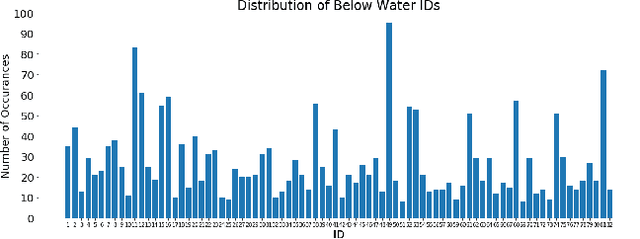Matt Sharpe
Towards Automatic Cetacean Photo-Identification: A Framework for Fine-Grain, Few-Shot Learning in Marine Ecology
Dec 07, 2022



Abstract:Photo-identification (photo-id) is one of the main non-invasive capture-recapture methods utilised by marine researchers for monitoring cetacean (dolphin, whale, and porpoise) populations. This method has historically been performed manually resulting in high workload and cost due to the vast number of images collected. Recently automated aids have been developed to help speed-up photo-id, although they are often disjoint in their processing and do not utilise all available identifying information. Work presented in this paper aims to create a fully automatic photo-id aid capable of providing most likely matches based on all available information without the need for data pre-processing such as cropping. This is achieved through a pipeline of computer vision models and post-processing techniques aimed at detecting cetaceans in unedited field imagery before passing them downstream for individual level catalogue matching. The system is capable of handling previously uncatalogued individuals and flagging these for investigation thanks to catalogue similarity comparison. We evaluate the system against multiple real-life photo-id catalogues, achieving mAP@IOU[0.5] = 0.91, 0.96 for the task of dorsal fin detection on catalogues from Tanzania and the UK respectively and 83.1, 97.5% top-10 accuracy for the task of individual classification on catalogues from the UK and USA.
NDD20: A large-scale few-shot dolphin dataset for coarse and fine-grained categorisation
May 27, 2020



Abstract:We introduce the Northumberland Dolphin Dataset 2020 (NDD20), a challenging image dataset annotated for both coarse and fine-grained instance segmentation and categorisation. This dataset, the first release of the NDD, was created in response to the rapid expansion of computer vision into conservation research and the production of field-deployable systems suited to extreme environmental conditions -- an area with few open source datasets. NDD20 contains a large collection of above and below water images of two different dolphin species for traditional coarse and fine-grained segmentation. All data contained in NDD20 was obtained via manual collection in the North Sea around the Northumberland coastline, UK. We present experimentation using standard deep learning network architecture trained using NDD20 and report baselines results.
 Add to Chrome
Add to Chrome Add to Firefox
Add to Firefox Add to Edge
Add to Edge